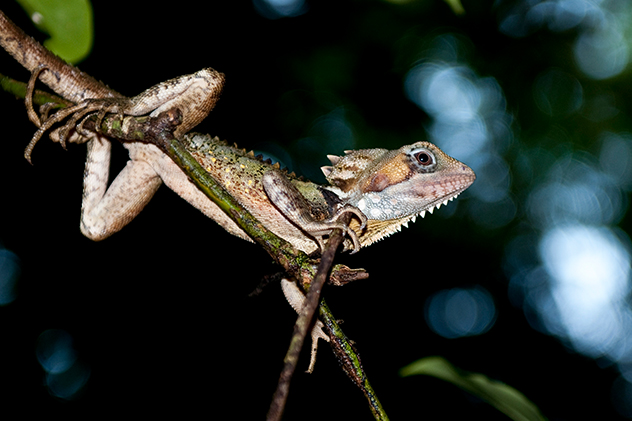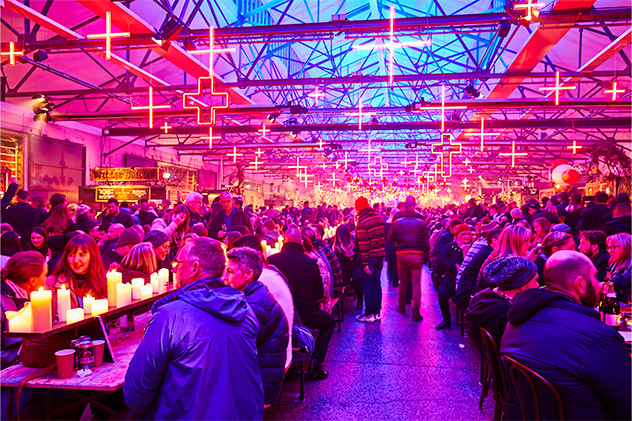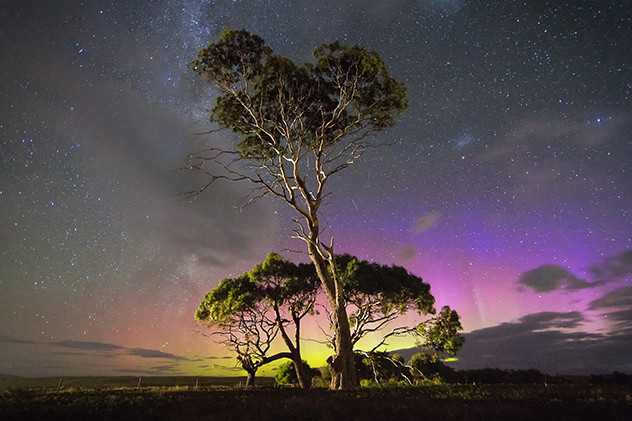The rise of noctourism

Traditionally, major drawcards for destinations are dependent upon daybreak – think fair-weathered hikes, sunlit cafés and afternoon brewery sessions. Yet, one word has been rising in the ranks of the 2025 travel lexicon: noctourism. Here we dive into what noctourism is and where you can enjoy this latest trend.
What is noctourism?
Noctourism, or nocturnal tourism, is all about exploring the world after dark. While for cities this is not a revolutionary idea, it’s an exciting new avenue for more regional areas and nature-based activities.
It uncovers the nighttime potential of tried and tested destinations and includes safari sleepouts, nocturnal animal tours, after-dark festivals, natural light shows and glowing installations. Noctourism is igniting evening economies and flipping ‘dead of night’ on its head.
Nocturnal wildlife tours

Australia’s harsh climate means a significant portion of our native fauna are night owls (some of them literally). Tapping into this thrum of late-night activity is Vision Walks Eco Tour in Byron Bay. Military grade night vision goggles will help you glide through the rainforest in search of bandicoots, microbats and frogs.
Enjoy dinner in the Daintree and search for tropical wildlife with FNQ Nature Tours’ Daintree Afternoon and Nocturnal Tour. Walk a remote paddock on Scribbly Farm, two hours’ drive south of Sydney, to encounter busy echidnas, wombats and kangaroos (freshly baked damper served fireside will await you on your return). Or see both Taronga Zoo Sydney and Western Plains Zoo in Dubbo under a new light, with an overnight stay and exclusive access to late night safaris.
Culture by night

Dark Mofo winter festival returns this June 2025 in Hobart, Tasmania.
A host of dazzling cultural fixes specially engineered for the darkness are popping up across the country. In the pitch-black desert, near the base of Uluru is Bruce Munro’s Field of Light installation. It was only meant to be a temporary exhibition, but this nighttime blooming of 50,000 solar-powered light buds has charmed travellers since 2016.
Another unmissable Uluru evening is Wintjiri Wiru, the hi-tech retelling of the ancient Mala story. A mix of 1200 illuminated drones, lasers, projections and a powerful audio retelling in Pitjantjatjara language shares the Anangu story.
For a cityside light show, it’s hard to skip Vivid Sydney’s Vivid Light installations. CBD landmarks, streets and parks are transformed into digital art pieces for five hours every evening during the three-week festival. For something a more debaucherous and adult, Tasmania’s winter festival Dark Mofo is an extravagant string of neon-lit late night feasts, live music and after-dark art installations and performances.
Southern Lights and bioluminescence

The chancy adventure in chasing nature’s own light shows is reason enough for a road trip. Thepopular South Coast beach destination of Jervis Bay is one of the best spots in the country to see the cerulean glow of bioluminescent plankton. Predicting exactly when this light show will lap the shores is tricky, but there’s a greater chance during the summer months.
For a guaranteed sighting of bioluminescence, head for the glow worms of Claustral Canyon in the Blue Mountains. Although you can still spot their gleaming bodies during the day, glow worms are most impressive at night. To witness the psychedelic winter dance of the Aurora Australis, otherwise known as the Southern Lights, head to somewhere like Bruny Island on the southern tip of Tasmania.
Stargazing

Another top contender on the noctourism hit list is stargazing. Light pollution has dulled glimpses of the night sky for many city-dwelling Aussies, but our nation’s vast expanse of regional and remote areas is ideal for amateur astronomy.
Some savvy towns have gone as far as seeking DarkSky International accreditation, which acknowledges destinations that actively minimise light pollution and connect communities with the cosmos. Carrickalinga in South Australia was Australia’s first location to receive DarkSky Place accreditation. Other locations recognised for their stellar stargazing are River Murray Dark Sky Reserve, Warrumbungle Dark Sky Park, Arkaroola Wilderness Sanctuary and Leon Mow Dark Sky Site.






